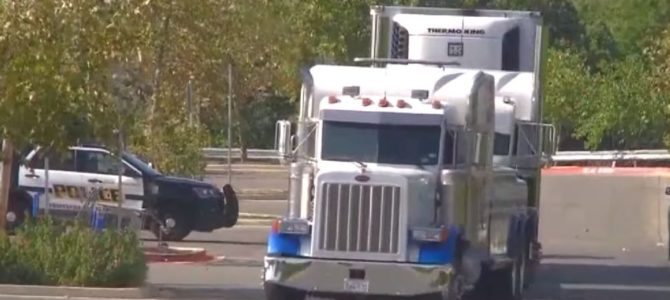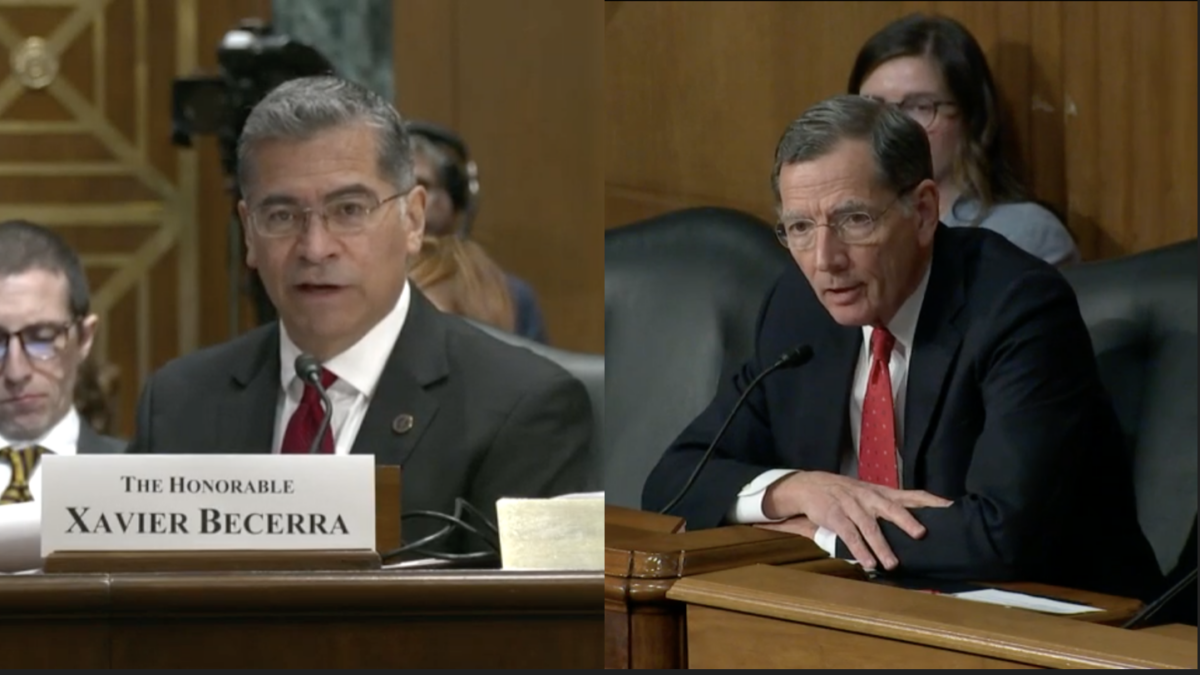
Americans got a visceral reminder of the consequences of America’s broken immigration system over the weekend when police in San Antonio found a tractor trailer in the parking lot of a Wal-Mart with 38 people inside, including two children. Eight were dead. Two more would die in local hospitals.
Around midnight on Saturday, a disoriented man emerged from the sweltering truck and approached a Wal-Mart employee to ask for water. The employee brought water and then called police, who found the bodies and the others inside the truck. Temperatures over the weekend in central Texas were 100 degrees, and the truck had no air-conditioning and no ventilation. Medics said those found inside were “very hot to the touch” with heart rates over 130 beats per minute. The city’s fire chief called it a “mass casualty situation.”
The story made international headlines, and most news reports made some mention of how it illustrates the dangers facing migrants who put their lives in the hands of unscrupulous smugglers to make the crossing into the United States. Although it’s rare to discover an 18-wheeler with corpses inside, smuggling and trafficking people across the border is commonplace. Last year, federal law enforcement officials launched 2,110 human-smuggling investigations that resulted in 1,522 convictions.
The grisly case in San Antonio is a reminder that the status quo is unacceptable. We need a thorough overhaul of immigration policy—but not along the lines we commonly hear. Neither the amnesty and open borders approach championed by Democrats nor President Trump’s quixotic border wall will be sufficient. Progressives complain that “restrictionist” immigration policies will make scenes like the one in San Antonio more common, while conservatives claim that militarizing the border will solve the problem.
Most Migrants Come Here to Work
Both sides are wrong, in part because they misunderstand—or misrepresent—what drives most migration, legal and illegal, across our southern border: economics. The fact is, the vast majority of those crossing the border are seeking work, which is why border crossings measurably decreased during the Great Recession, and picked back up when the economy improved. However, the slow recovery, combined with stricter enforcement of U.S. immigration laws, meant that even after the Great Recession more Mexican immigrants were leaving the United States than were arriving, according to an analysis by Pew Research Center.
Of course there are other factors, too. In recent years, endemic violence and poverty in Central America contributed to a spike in illegal immigration from Honduras, Guatemala, and El Salvador, including minors traveling without their parents. Smugglers took advantage of unsuspecting families, promising them that President Obama’s relaxed immigration enforcement policies meant they would be issued “permits” by the U.S. government once they got across the border.
Messaging can work in the other direction, too. Trump’s tough immigration rhetoric has had a measurable effect on illegal immigration since he took office. Between February and May of this year, the number of illegal immigrants apprehended crossing the border has dropped 53 percent from the same period last year, largely because would-be migrants feared they would caught and deported if they came into the country illegally. Those fears are not without merit: the number of immigration arrests has risen sharply under Trump, who promised a crackdown during his presidential campaign.
But none of this amounts to a policy that will slay the many-headed hydra of illegal immigration. On the one hand, we need to make it easier for migrants seeking work in the United States to cross the border. On the other, we need to secure the border and make it much harder for smugglers, traffickers, and drug dealers to enter the country. Contrary to the prevailing rhetoric, the two are not mutually exclusive.
The Roots Of Our Illegal Immigration Crisis
History can be a useful guide here. After all, there used to be a way for unskilled workers to move back and forth across the border with ease. In 1942, the United States and Mexico created the Bracero program, allowing farm laborers to cross from Mexico with a work permit that guaranteed them decent living conditions and a minimum wage. The program itself was a codification of an arrangement that had been in place informally for decades. Although it was far from perfect, it was better than the uncontrolled illegal immigration—and the smuggling and trafficking activity that attends—which prevails today.
The demise of the Bracero program is telling. Labor unions in the United States complained that the braceros’ presence represented unfair competition, and lobbied for restrictions on Mexican workers as well as greater protections for union members. Labor leaders like César Chávez organized protests of the program and agitated for its demise, which they accomplished in 1964. Shortly after the Bracero program ended, Chávez helped orchestrated the rise of the United Farm Workers.
In other words, opposition to organized migrant labor came from the political left, as a protection scheme for domestic farm workers. Today, progressives pose as the champions of illegal immigrants and yet refuse to acknowledge the Left’s role in the rise of illegal immigration and the misery it produces on both sides of the border. For all the debate over immigration today, we hear precious little—short of calls for amnesty—about how to make it easier for Mexican workers to enter the country and work here legally. There’s a reason for that, and it’s not because progressives are interested in allowing the free market to determine the flow of labor across the U.S.-Mexico border.
If nothing else, the shocking scene in San Antonio this weekend should serve as a reminder of the stakes at play in immigration reform. There are steps we could take so that migrants looking for work in the United States don’t have to risk suffocating in the back of a truck to get here. Doing so would also undercut the cartels that profit from smuggling people across the border, allowing the authorities to focus on criminal activities. That we refuse to take such steps is a damning indictment not just of our political leaders but also of the special interests that maintain the status quo, no matter the human cost.









